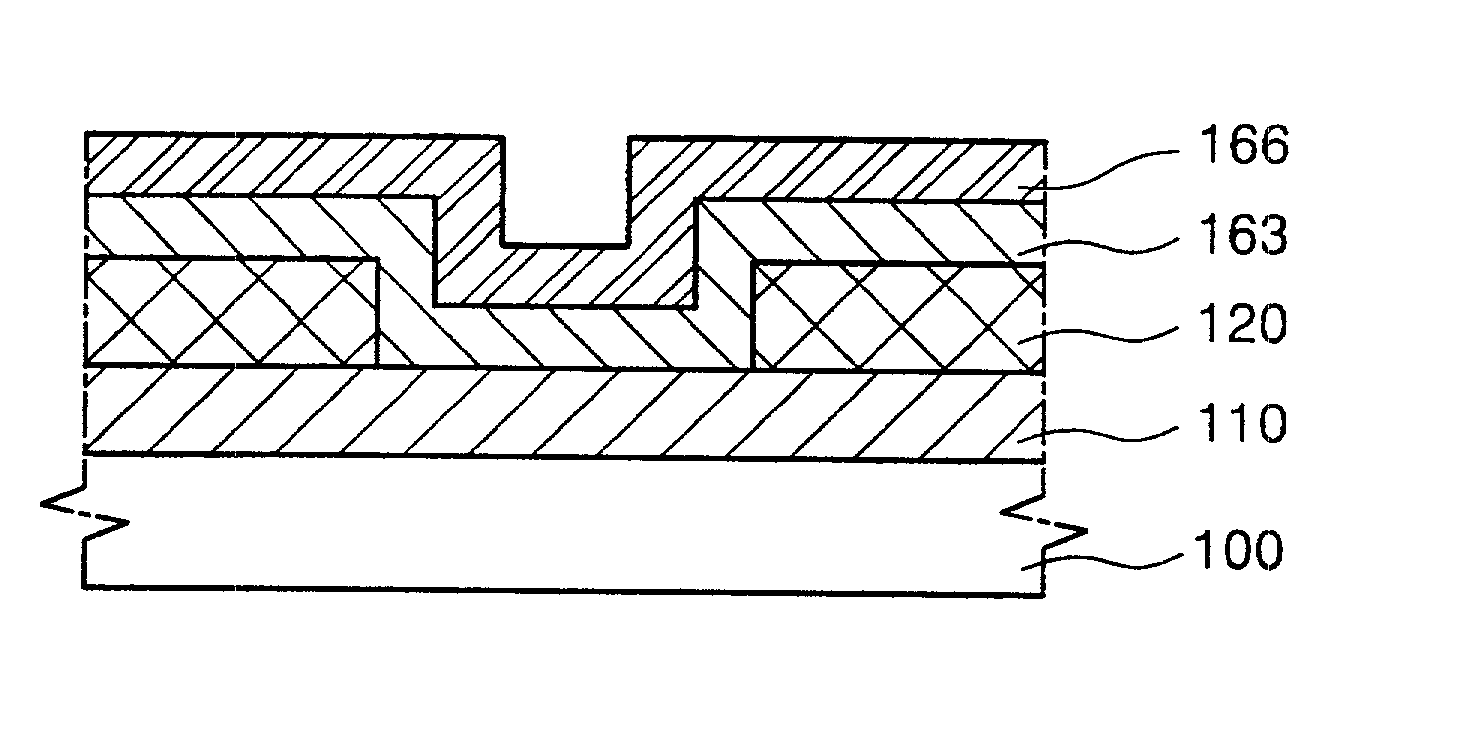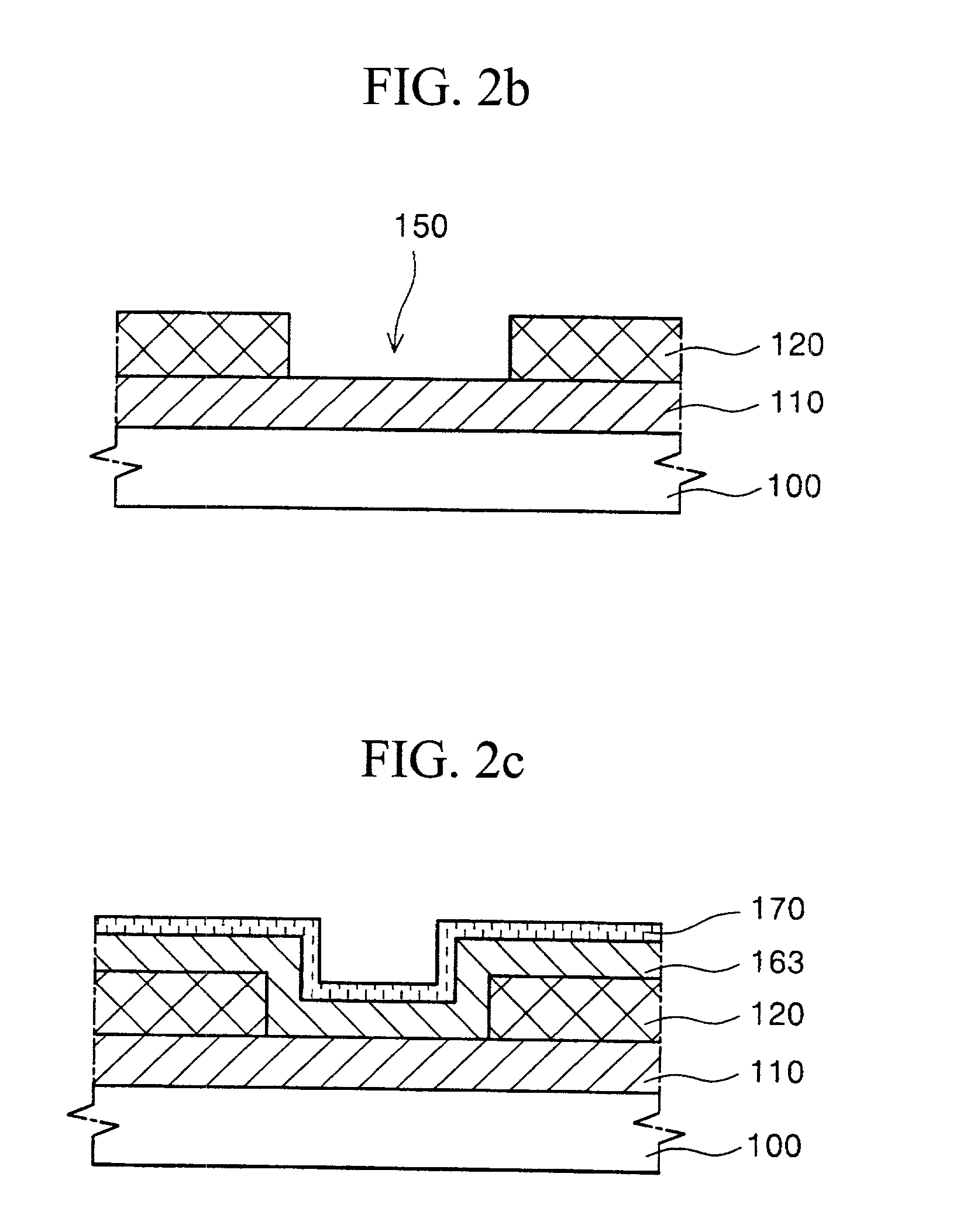Method for forming wire in semiconductor device
- Summary
- Abstract
- Description
- Claims
- Application Information
AI Technical Summary
Benefits of technology
Problems solved by technology
Method used
Image
Examples
Embodiment Construction
[0018] The disclosed methods will now be described with reference to the accompanying drawings.
[0019] FIGS. 2a through 2e are cross-sectional views sequentially illustrating a method for forming a wire in a semiconductor device.
[0020] As illustrated in FIG. 2a, a conductive layer 110 and a dielectric layer 120 are sequentially deposited on a semiconductor substrate 100 having a predetermined lower substructure, and then a photoresist film 130 is coated thereon, for thereby forming a contact hole forming portion 140.
[0021] At this time, titanium (Ti) silicide or cobalt (Co) silicide is adapted as the conductive layer 110, and the silicide can be formed by a silicide method.
[0022] Continuously, as illustrated in FIG. 2b, a contact hole 150 is formed in the dielectric layer 120 by performing an etching process for etching the dielectric layer 120 up to the upper part of the lower conductive layer 110 using the photoresist film 130 as a mask.
[0023] Then, as illustrated in FIG. 2c, titan...
PUM
 Login to View More
Login to View More Abstract
Description
Claims
Application Information
 Login to View More
Login to View More - R&D
- Intellectual Property
- Life Sciences
- Materials
- Tech Scout
- Unparalleled Data Quality
- Higher Quality Content
- 60% Fewer Hallucinations
Browse by: Latest US Patents, China's latest patents, Technical Efficacy Thesaurus, Application Domain, Technology Topic, Popular Technical Reports.
© 2025 PatSnap. All rights reserved.Legal|Privacy policy|Modern Slavery Act Transparency Statement|Sitemap|About US| Contact US: help@patsnap.com



